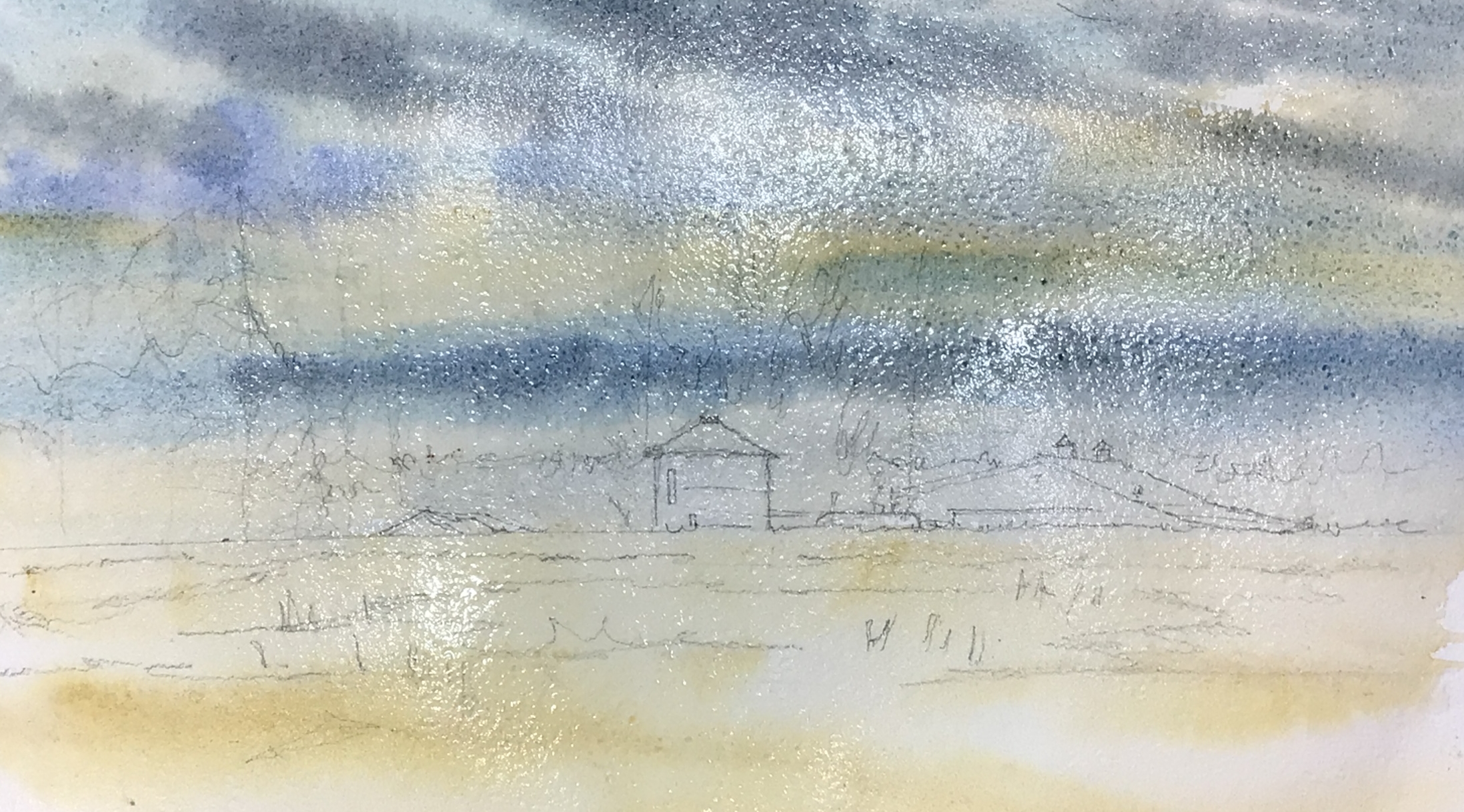By Catherine Hillis
Everything around us can provide inspiration. Winter may be bleak, but there’s still plenty to express in watercolor paint. If you feel you’re in a rut, try this wet-on-wet exercise to initiate a little imagination.

Step 1
Take a photograph of a common landscape. Try cropping the photo to simplify it. Use the “Filters” tool in your photo-editing program to see if a different color, or a warm or cool filter will add to the story you want to convey. Remember that this is merely an exercise, so keep it simple.

Step 2
Paint a moody value sketch. Once you’ve selected, edited, and cropped your reference photo, paint a quick value sketch — no larger than 5 x 7 inches. An inexpensive sketchbook or printer paper are all you need. Use only one color. Neutral Tint is a good choice, but any color is fine, especially if it makes the process more fun for you. Focus on keeping the shapes simple and connected. There should be no details in this sketch, and it shouldn’t take more than 10 minutes to complete. I used raw umber here to capture a warm sense of light for this country scene.

Step 3
Select Colors. Before painting, consider what colors you’ll use. This scene can be painted in almost any scheme, warm or cool, but I chose raw umber, lavender, cerulean and cobalt blue, as well as neutral tint, and a primary red used very sparingly for the barn. The red is never used directly but, instead, is always mixed with some of the selected colors, in order to maintain a unified color scheme.
Step 4
Wet the paper and paint an underwash. Once the sketch is lightly drawn with pencil on the surface, wet the paper evenly front and back. Roll a paper towel roll lightly over the front side of your paper if it’s too wet. Here I used raw umber, diluted to the consistency of tea, to paint very lightly and irregularly on the paper.

Step 5
Paint the sky while the paper is wet. While the paper is still wet with the light under wash, paint the sky. Think carefully about the sky before proceeding, squeezing out the paints you’ll use so that you can work can quickly and spontaneously. The paint is a little thicker now – diluted to the consistency of milk or even creamy milk. I used raw umber, cobalt blue and lavender in this sky because they’re near complements, producing a beautiful and natural gray. I’ll use the same colors in the foreground.
Step 6
Be organized so you can paint quickly. As the paper dries, you need to move fast. If the paper begins to dry too soon, a mini spray bottle can be used to lightly dampen the substrate.

Step 7
Paint the mid-ground. The paper is damp, but not wet, producing soft edges. The foreground is developed on damp paper as well, but as the paper dries, more details can be added. Work from wet to damp to dry. While working on wet and damp paper, you’ll achieve soft and lost edges. As the paper dries, you develop the hard edges and details.

Final Step
Finish up. Once the paper is dry, use a rigger brush to paint the trees and some of the corn stalks. Use the sides of brushes to create drybrush texture in the foreground. Gouache can be used for touches of white. Keep it simple and remind yourself to do as little as possible to reach the goal of finishing this wet-on-wet exercise.
Catherine Hillis teaches watercolor classes and workshops around the country and abroad. She’s a regular contributor to americanwatercolor.net.







